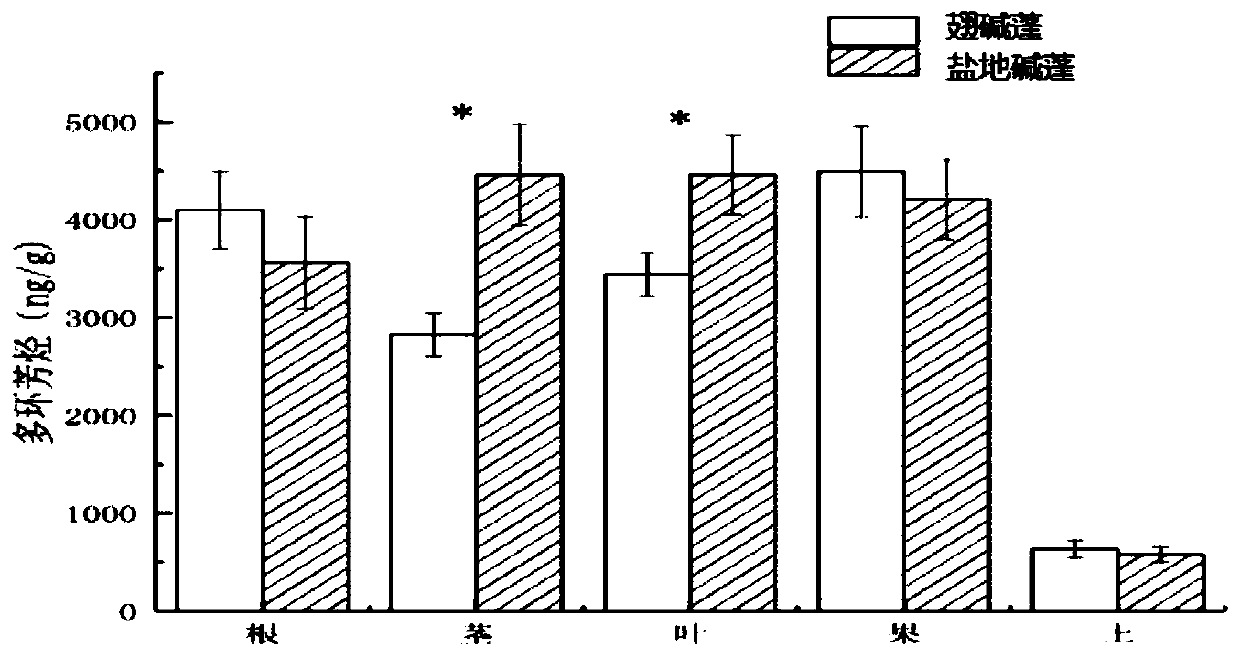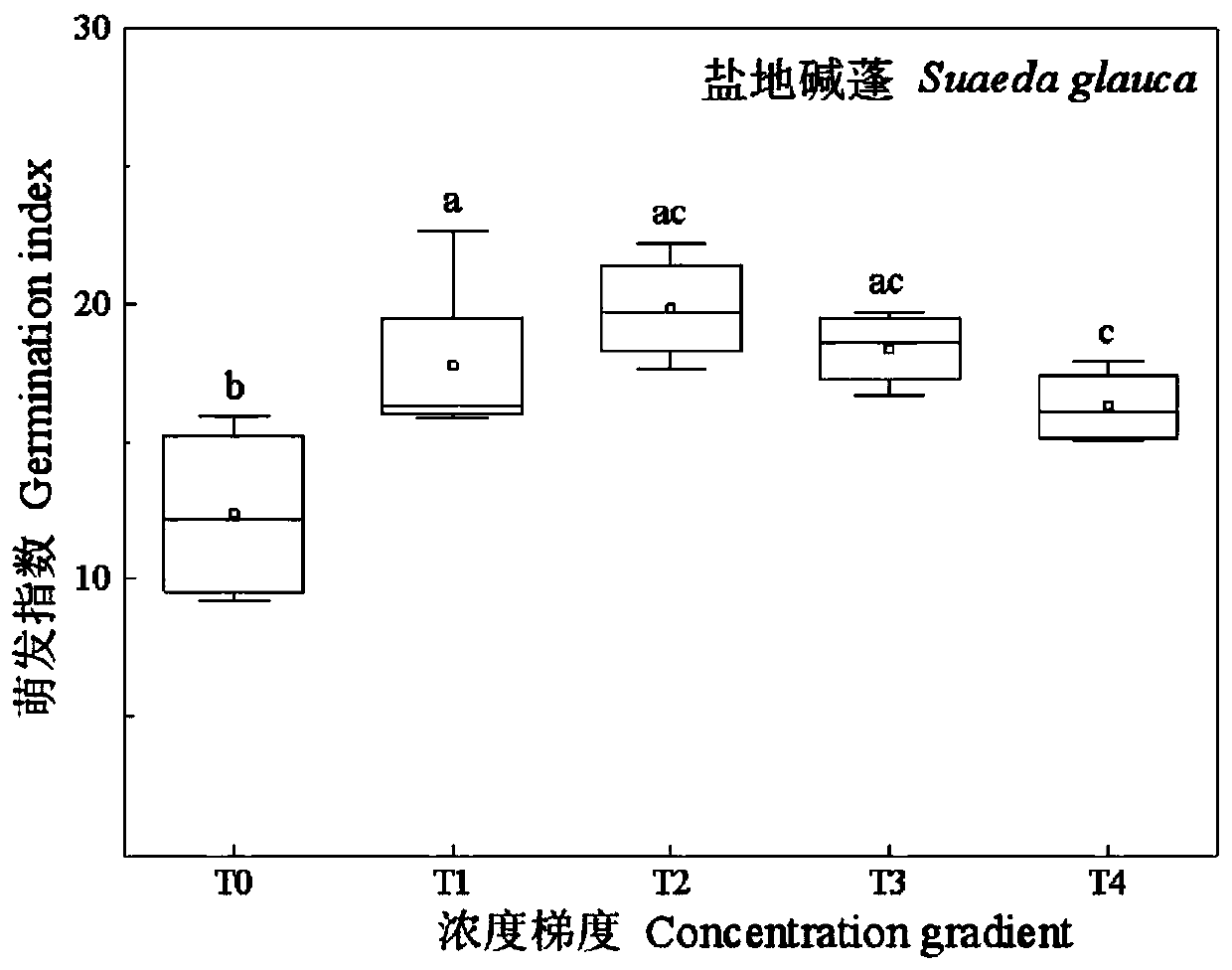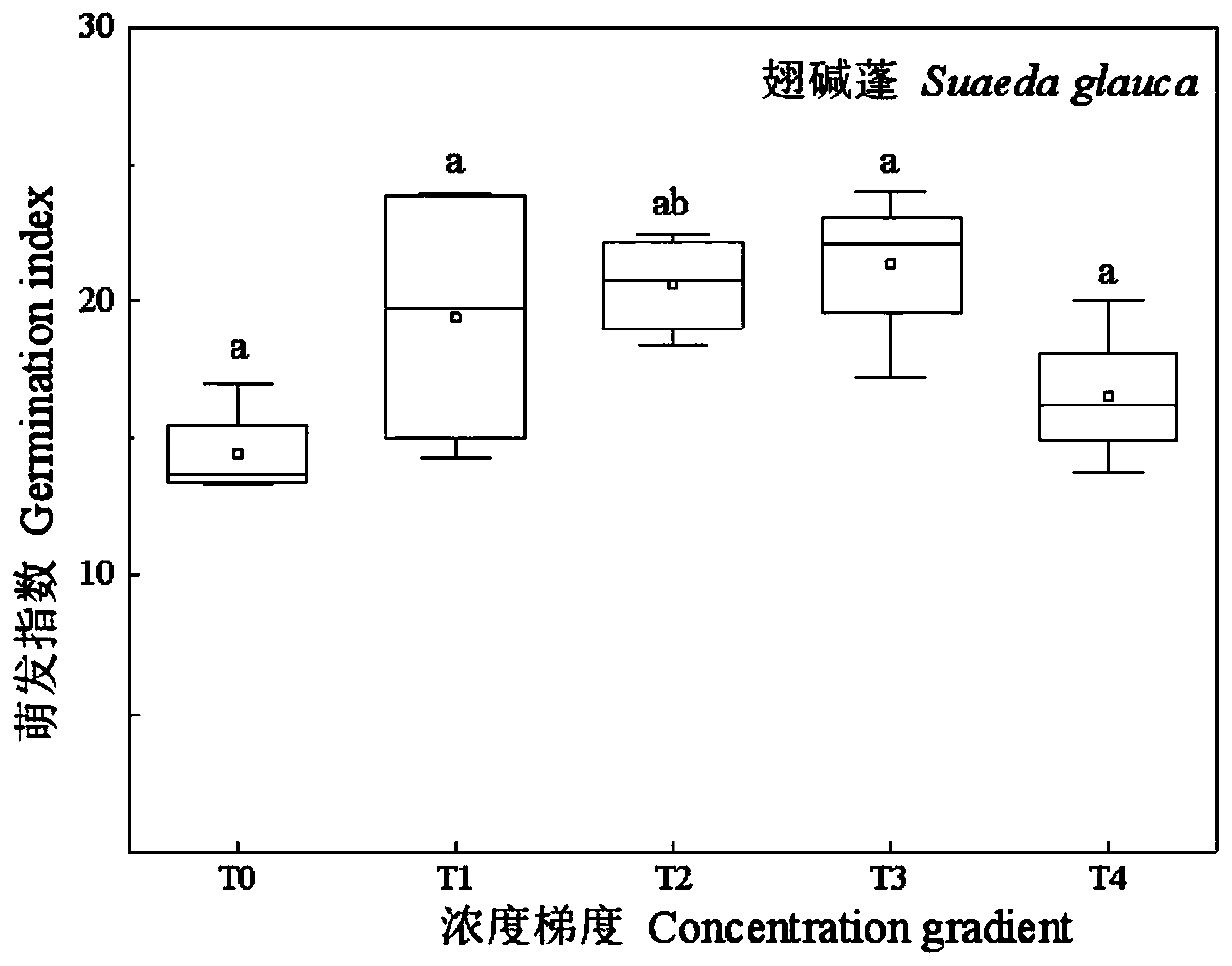Screening method of coastal wetland polycyclic aromatic hydrocarbon pollution purification and remediation plants
A polycyclic aromatic hydrocarbon and plant restoration technology, applied in the fields of botany equipment and methods, restoration of polluted soil, plant cultivation, etc., can solve the problems of diffusion of introduced species, lack of removal and restoration of pollutants, invasion, etc., and achieve ecological effects. Good, good ecological effect, the effect of ensuring ecological security
- Summary
- Abstract
- Description
- Claims
- Application Information
AI Technical Summary
Problems solved by technology
Method used
Image
Examples
Embodiment Construction
[0034] The present invention will be further described in conjunction with the accompanying drawings.
[0035] A screening method for purifying and repairing plants polluted by polycyclic aromatic hydrocarbons in coastal wetlands, comprising the following steps:
[0036] (1) Field plant survey: investigate the distribution status of plants in coastal wetlands to be restored. Through line transect and quadrat survey, three 100m long transect lines of high tidal zone, mid tidal zone and low tidal zone are respectively set parallel to the coastline. Each transect line Set up 5-8 1m×1m quadrat plant populations, and count the plant species in the quadrat and the biomass of each plant in the quadrat. The number of sampling plots is set according to the size of the restoration area, and try to cover different vegetation types in the restoration area. This survey found that the coastal wetland (main) vegetation is Suaeda salsa, Suaeda pterosa, and Spartina alterniflora.
[0037] Fu...
PUM
 Login to View More
Login to View More Abstract
Description
Claims
Application Information
 Login to View More
Login to View More - R&D
- Intellectual Property
- Life Sciences
- Materials
- Tech Scout
- Unparalleled Data Quality
- Higher Quality Content
- 60% Fewer Hallucinations
Browse by: Latest US Patents, China's latest patents, Technical Efficacy Thesaurus, Application Domain, Technology Topic, Popular Technical Reports.
© 2025 PatSnap. All rights reserved.Legal|Privacy policy|Modern Slavery Act Transparency Statement|Sitemap|About US| Contact US: help@patsnap.com



